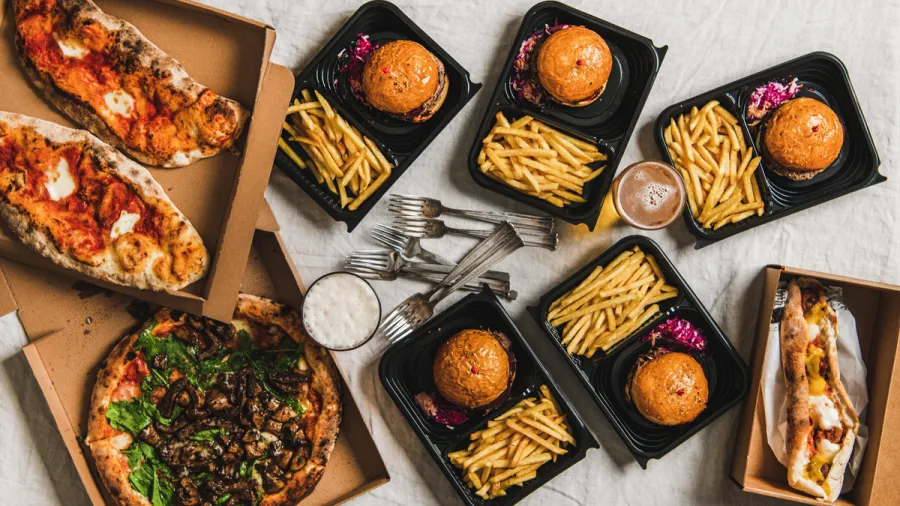
Why it’s high time for QSRs to look into data-driven demand forecasting solutions
Imagine closing the restaurant at the end of the day with half of your supplies allocated for the day still on the shelf: this is one of restaurant operators’ worst nightmares.
This scenario is one the easiest ways to show why QSRs must invest not only in front-of-house technologies that address customers’ needs, but also in solutions that improve back office processes such as demand forecasting. This specific area involves estimating demand — based on historical data, economic trends, and market analysis — for efficient inventory planning that could avoid any losses.
A data-backed demand forecast could spell the difference between profit and losses for a restaurant. “Inventory sitting on a shelf is money sitting on a shelf. Keeping the forecast tight reduces waste and ensures that the restaurant has stock on hand to meet consumer demands,” explains Paul Tregoning, general manager of Fourth, one of the leading providers of end-to-end technology solutions for hospitality, leisure, and retail industries.
Accurate forecasting that takes into account events, promotions, and other factors that affect sales, is crucial to avoid losses, especially for QSRs that exist on exceedingly thin margins. Unfortunately, most restaurants have yet to realise the importance of accurate demand forecasting.
“Many of the prospect clients we come across are still using outdated methods. A lot of them are still relying on a manager’s ‘best guess’, complicated spreadsheets, or dated technology solutions that often use simple data points or basic math to attempt the best guess forecast,” shares Tregoning.
Whilst many QSRs stick with legacy methods because of their minimal cost, the lack of accuracy and inconsistent results are disadvantages that prove to be far more expensive down the line.
On the other end of the spectrum are restaurants that are using top-down forecasting systems using vast amounts of data and complicated algorithms. “Whilst the results may provide an incrementally more accurate forecast, the costs and support complexities are often prohibitive,” Tregoning explains.
With solutions that lie on either end of the spectrum, QSRs must opt for the technology providing forecasts that are data-driven yet simple and intuitive enough for the restaurant managers to use.
Data-backed predictive orders
With accurate forecasts, restaurant operators can generate data-backed predictive orders that are crucial in inventory management, especially if the QSR want to adapt the just-in-time inventory method that is changing the game in the industry right now.
What used to be considered taboo in the industry, the just-in-time order management system is now taking the spotlight as restaurant operators start to look at shaving off thin margins whilst at the same time improving the freshness of their products.
“For the typical restaurant operator, the thought of running out of inventory was and is often viewed as one of the cardinal sins. The adoption of the just-in-time ordering method used to be viewed by most industry players as a pariah. But we are starting to see those concerns fade away,” says Tregoning.
And the key to adapting this inventory management method is an accurate demand forecast.
The most obvious benefit of having an accurate forecasting system is the reduction in the amount of capital tied up on a restaurant shelf. According to Tregoning, other benefits include better negotiating positions with suppliers; the ability to reduce or reallocate space in a restaurant; having fresher products, and reducing waste.
To this end, Fourth helps QSRs with an advanced forecast that provides the baseline for the labour, ordering, and production demand modules. This forecast is based on the transactional data produced by the point of sale (POS) systems combined with an advanced algorithm that takes into account seasonality, events, promotions and other factors.
Whilst data-driven forecasts are essential, Fourth’s solutions do not dismiss the critical role that the human element plays in refining a forecast. “Our solutions allow the experience and local knowledge of an operator to adjust the forecast. Our systems can take into account local factors that have impacts on the restaurant. For example, managers can configure their forecasts to take into account negative impacts caused by roadworks or events, and positive impacts such as increased sales activities due to sporting events nearby, further improving the usefulness of their forecasts” says Tregoning.
About Fourth
Fourth provides end-to-end, best-in-class technology and services for the hospitality, leisure and retail industries. Its procurement, inventory, and workforce management solutions, coupled with a complete data and analytics suite, give businesses the actionable insights they need to increase efficiency within operations, control costs, scale profitability, improve employee engagement, and maintain compliance.
Since its merger with US-based HotSchedules/ MacromatiX, Fourth serves more than 7,000 customers across 120,000 locations globally.
Fourth works with multi-national companies across the hospitality, leisure and retail industries, including McDonalds, KFC, Pizza Hut, Hungry Jack’s, Nando’s, Oporto, Starbucks & Taco Bell.
For more information, visit www.fourth.com



























